Test Driving the Porsche Taycan Turbo S on the Circuit! How Does It Compare to the 911 and Panamera?
公開日:2020.11.02
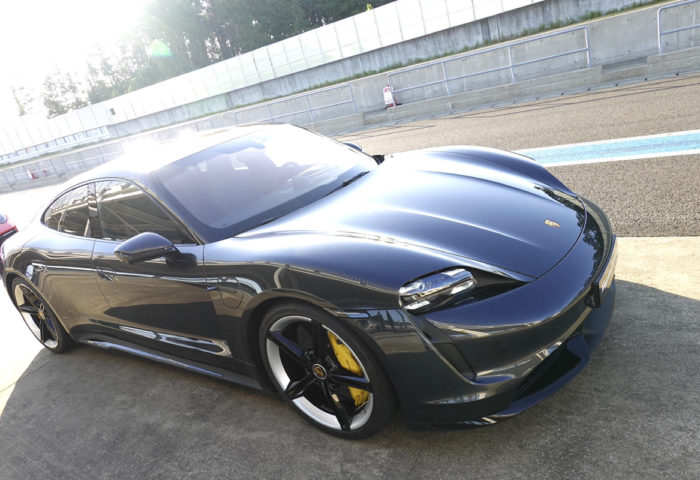
My husband recently had the chance to drive the Taycan on a circuit, and he wrote down his impressions. Please take a look if you’re interested.
Taycan Test Drive
I had already seen the Porsche Taycan several times at previews and exhibitions, but this time was different. I actually got to drive the Taycan, which is not yet released in Japan. And not just anywhere — it was a test drive on a circuit.
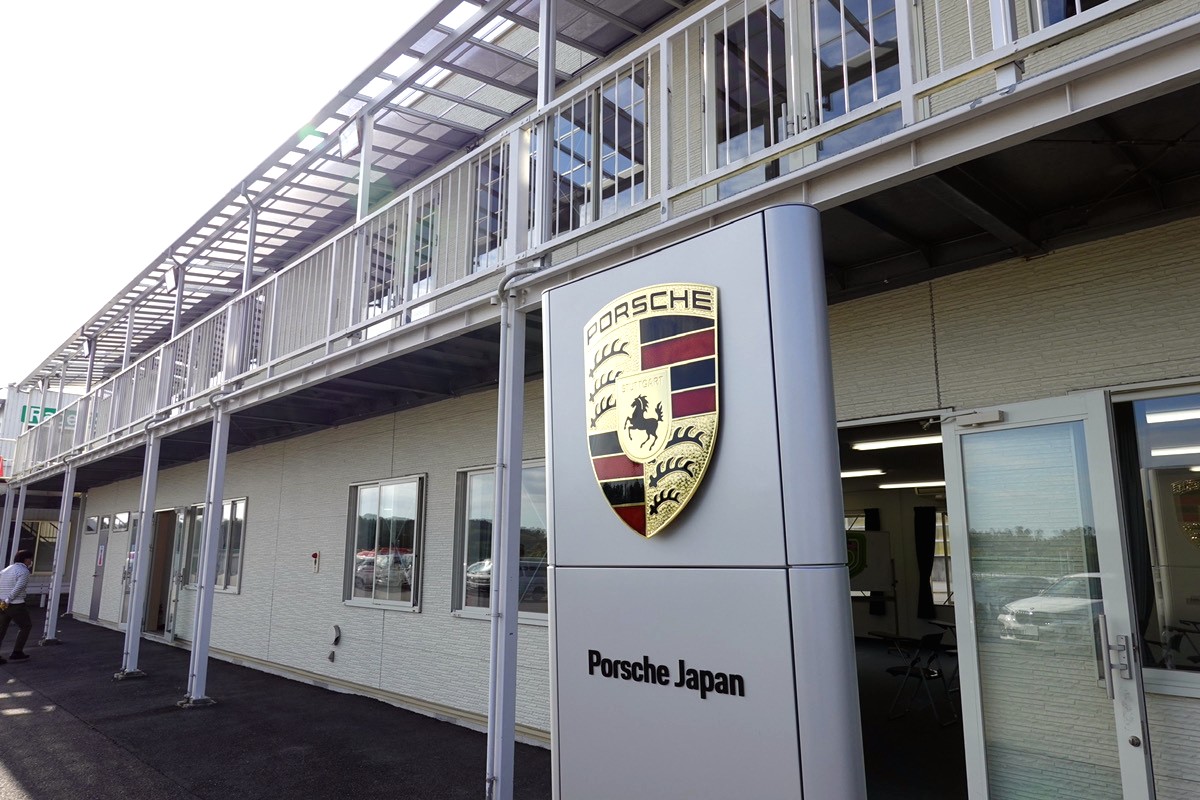

Under the clear skies at the Suzuka Forest Raceway, the Taycan Turbo S and Taycan Turbo were waiting. Their somewhat intimidating aura combined with futuristic design gave off a vibe that felt completely new and unlike any car I had experienced before.
This time, I was driving the Taycan’s top model, the Turbo S. After receiving explanations about the console and switches, I climbed into the cockpit. It felt less like a driver’s seat and more like a true “cockpit.” The instrument panel was fully digital, compact vertically, and not very large overall.
It felt more like a special sports car than a sedan.
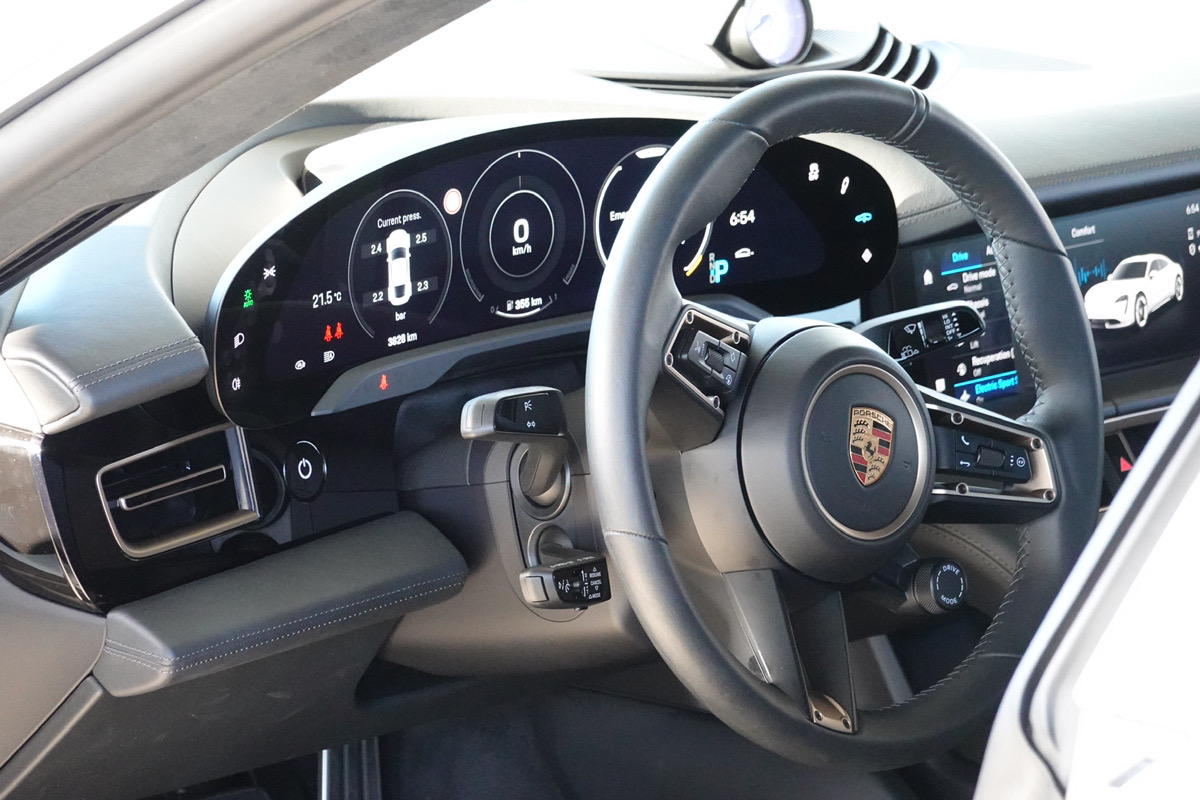
The power was already on, but I was told that the Taycan is ready to drive simply by unlocking the car, getting in, and pressing the brake. They aimed for smartphone-like ease of use, and indeed, this felt very natural and stress-free.
I shifted into drive using the small lever to the right of the steering wheel and pressed the accelerator. The sensation was smooth and seamless — the electric motor’s unique smoothness made the tires start rolling effortlessly. It reminded me of the feeling when driving the electric motor in the Cayenne E-Hybrid.
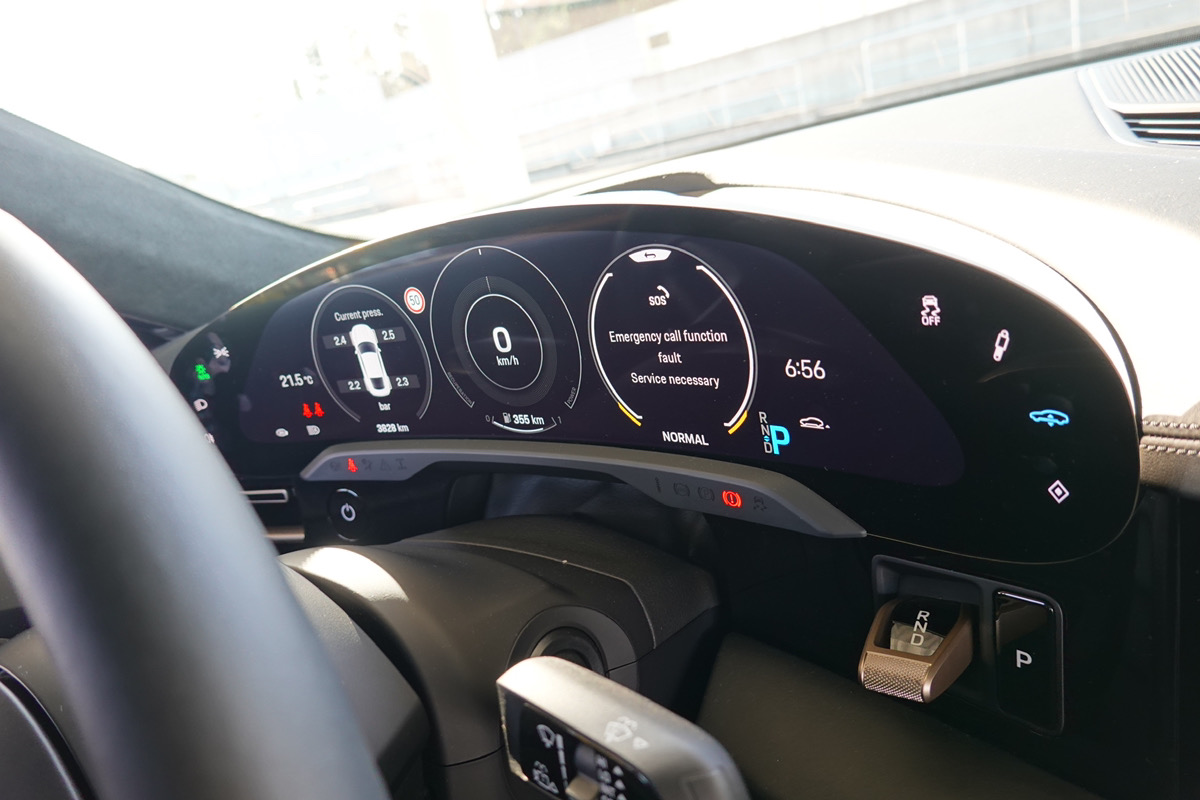
I gradually opened the throttle and approached the first corner. The driving mode was set to Normal for the first lap, and the leading 992-generation 911 was keeping a moderate pace. The circuit’s pavement was in excellent condition, making it hard to judge ride comfort, but the contact with the road was very strong, and the ride felt flat and composed.
Alex from Porsche Japan mentioned that the Taycan is equipped with a 3-chamber air suspension designed with its weight in mind, and he believes the ride comfort is better than the current Panamera.
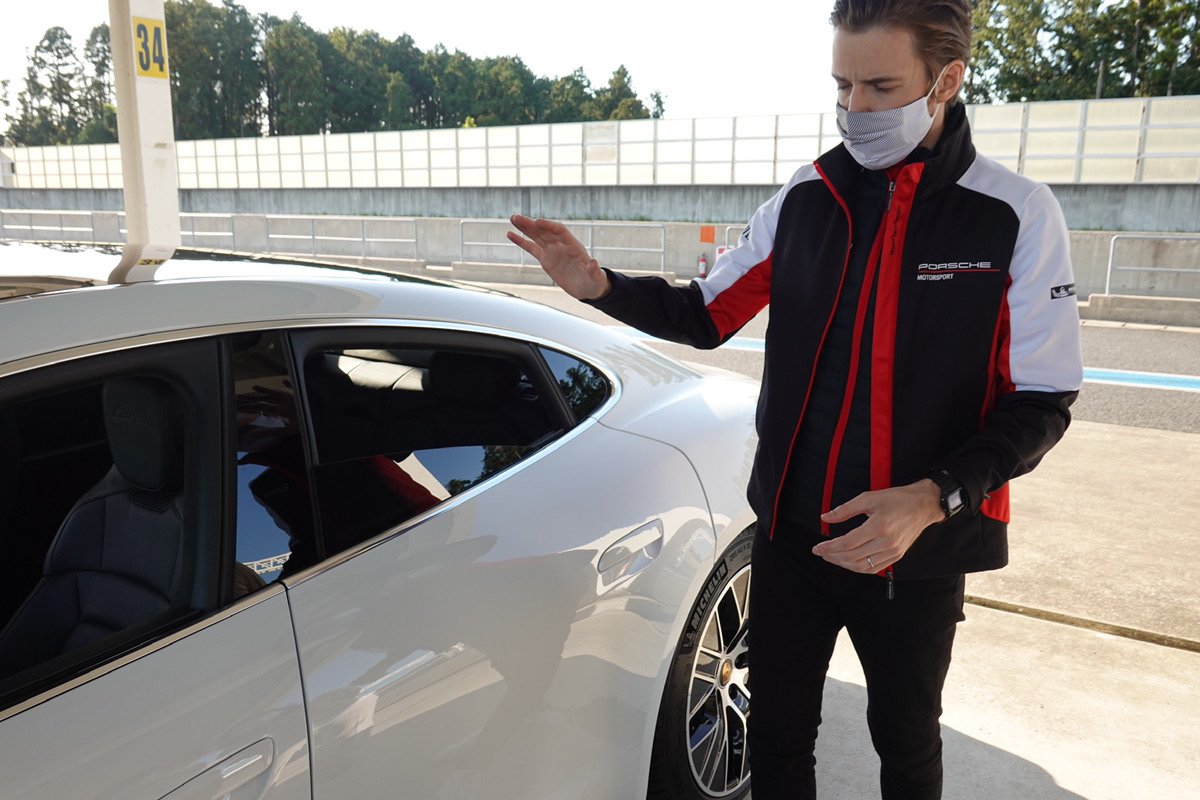
Indeed, the suspension felt mild yet very firm at its core, with almost no noticeable body roll even in the first corner. I gently pressed the accelerator through the gentle curve from the second to third corner, and it felt so natural that you wouldn’t even realize it’s an electric vehicle — no sudden power surges or overly sensitive throttle response.
It felt much like driving a powerful gasoline car. I think most people would feel comfortable driving it without any awkwardness.
I operated the touchscreen on the center console to turn on the Porsche Electric Sport Sound. Then, a sound that’s hard to describe — something like a “vroom” or “weeeooom” — clearly filled the cabin. The sound rose in pitch with the accelerator, making it very enjoyable. It’s like a sports exhaust option for an engine car, but inside the cabin, it sounded futuristic and distinctly electric. I would definitely want this option.
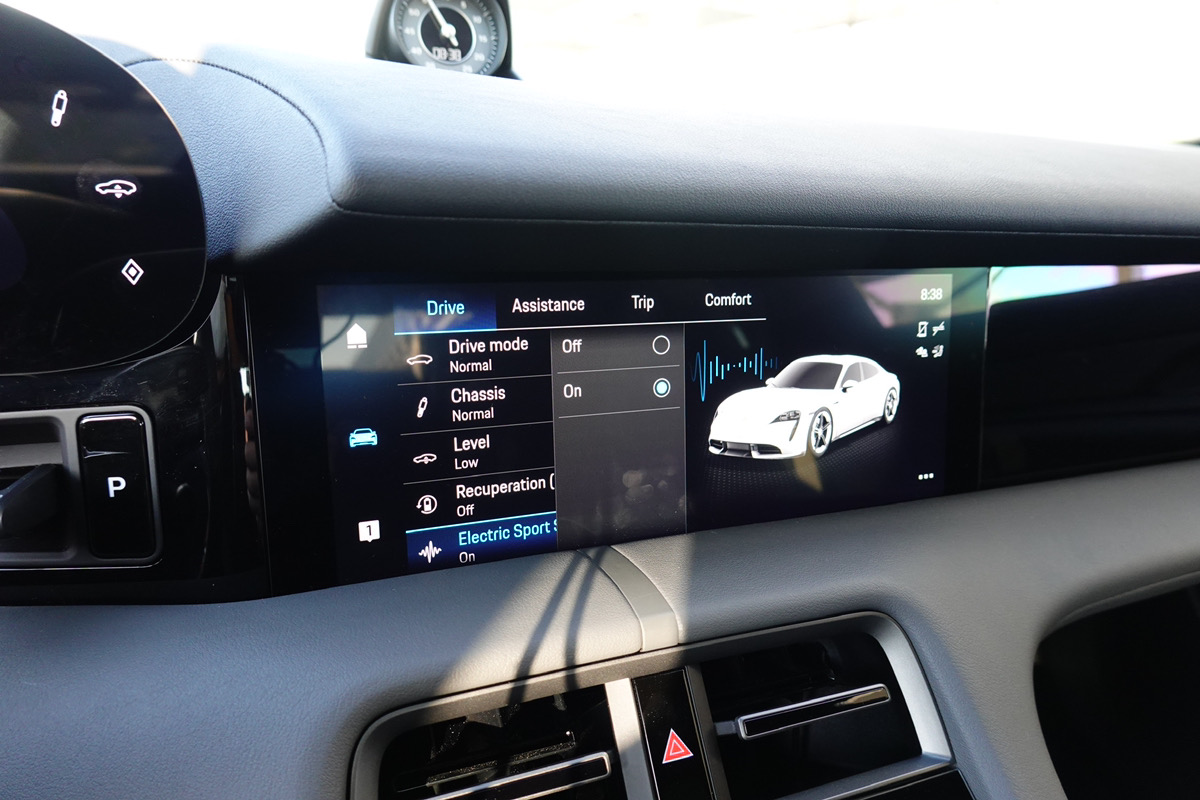
The fourth corner was a tight right-hander. Given the Taycan’s hefty weight of about 2.5 tons, I braced myself for some body sway or noticeable roll. But as soon as I entered the corner, I was surprised by its behavior. My impression was, “Is this really a 2.5-ton car?” It felt like driving a car weighing around 1.5 to 1.6 tons.
There was no sensation of the upper body being thrown around; the low center of gravity was very apparent. It felt like driving an incredibly low-slung car, smoothly powering through tight corners.
When the 911 ahead picked up the pace, I pressed the accelerator. Power surged instantly, and I easily kept up with the 911. In moments like this, you really feel the electric car’s advantage — the time between pressing the accelerator and power delivery is incredibly short.
Of course, the 911’s response is impressive, but the motor operates on a whole different level. It’s a matter of milliseconds, but human senses can definitely perceive the difference.
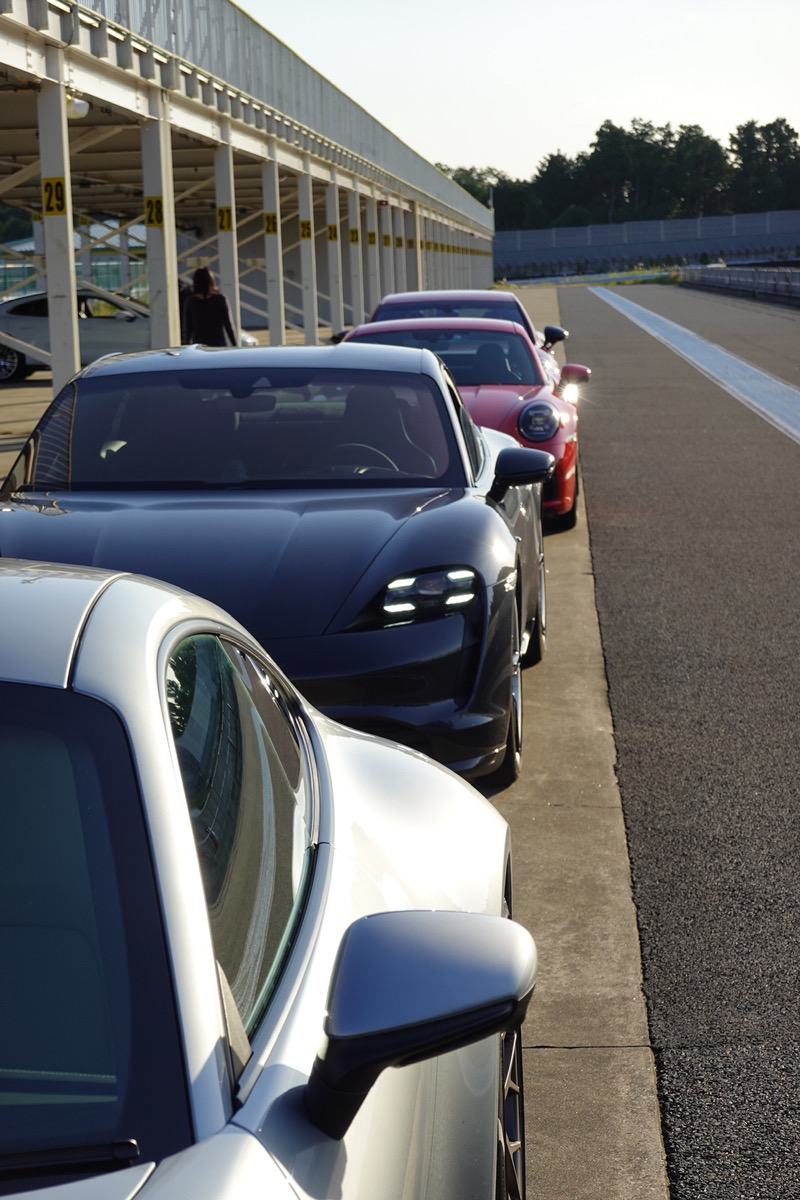
Experiencing Taycan’s Acceleration
After a lap, I switched to Sport mode. Then, I received radio instructions to floor the accelerator on the home straight, finally unleashing the Taycan Turbo S. I pressed the accelerator pedal all the way down. The Taycan accelerated fiercely, pushing my head back as the speedometer climbed rapidly.
The acceleration felt comparable to the GT3 or Panamera Turbo. Just as I was thinking, “Wow, this is fast!” I experienced something new — the acceleration G-force pushing my head back didn’t ease up.
Normally, as speed increases, the acceleration G-force subsides, and your head gradually returns to its usual position. But the Taycan was different. The acceleration G-force didn’t let up. My head wouldn’t move back forward. My reaction was, “Wait, it still accelerates this hard from here?!“
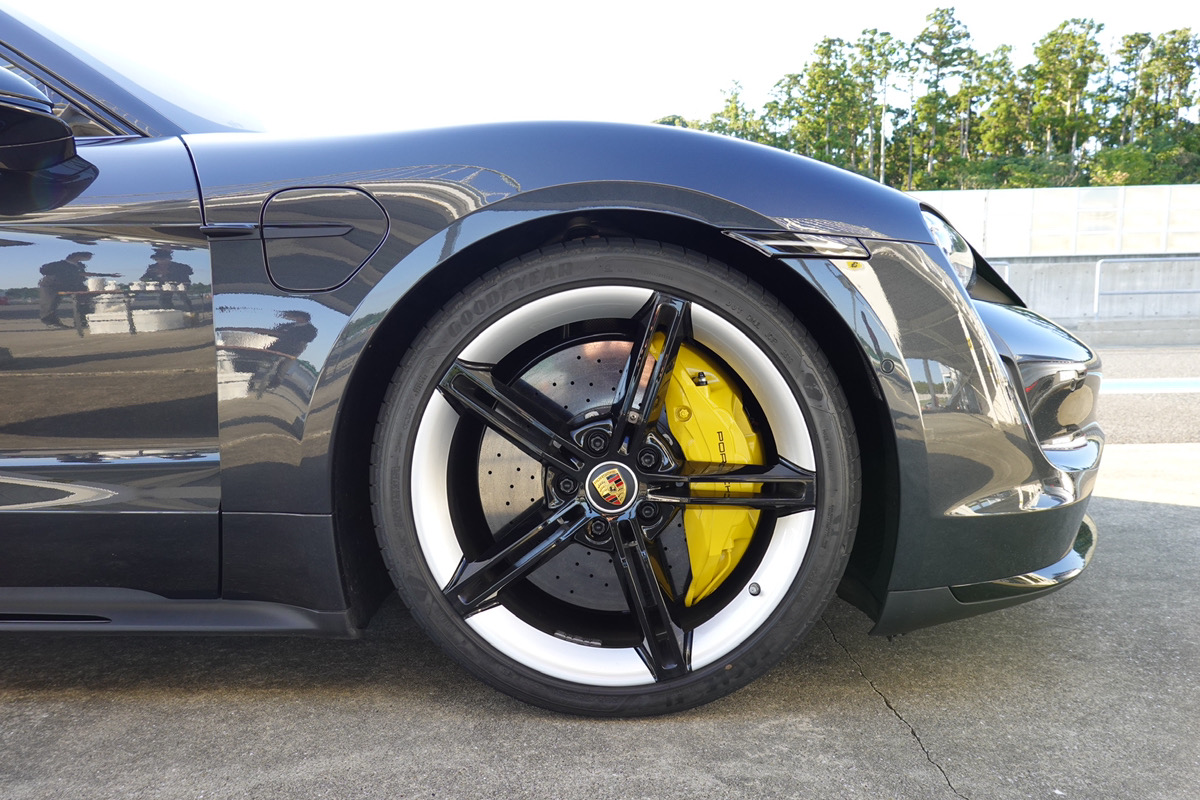
The acceleration keeps building. It felt like the speed just kept climbing smoothly, defying my body’s expectation that the G-force would ease around 80 km/h. It was an acceleration sensation that made me think, “It’s still going from here?” It reminded me of how a skilled baseball pitcher’s ball seems to “jump” or “extend” mid-flight — the Taycan showed a similar behavior.
While its top speed can’t match gasoline cars, this kind of acceleration is perfect for everyday highway merges and overtaking, where you can fully appreciate the Taycan’s power.
| Next page → The Taycan is closer to the 911 than the Panamera!? My husband’s take… |
このブログが気に入ったらフォローしてね!


Comment ( 0 )
Trackbacks are closed.
No comments yet.